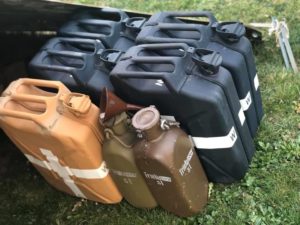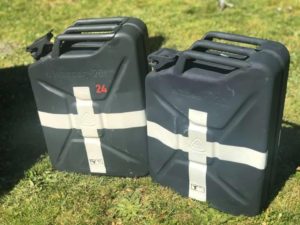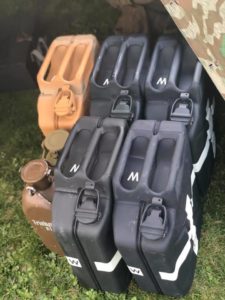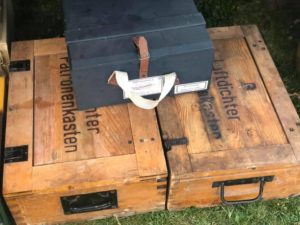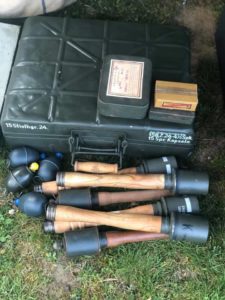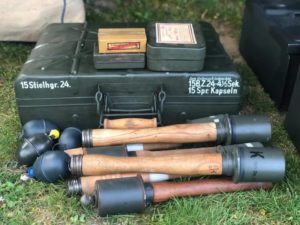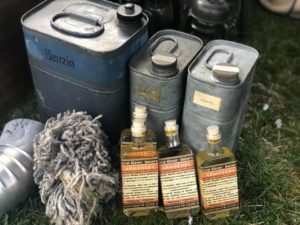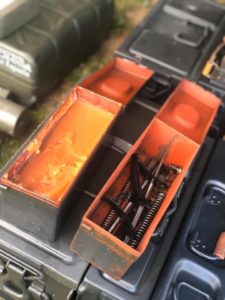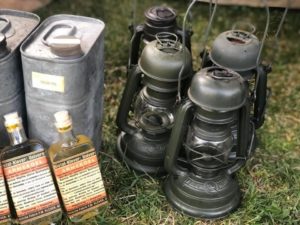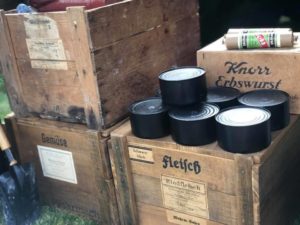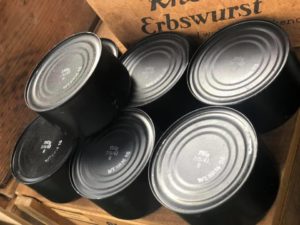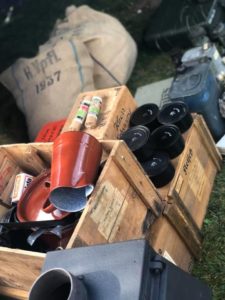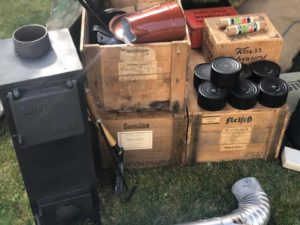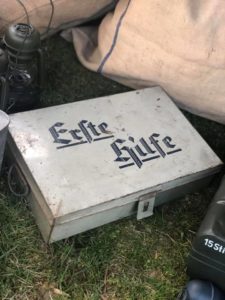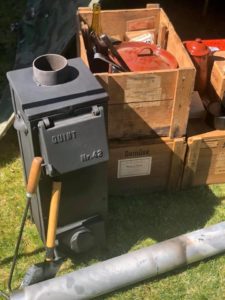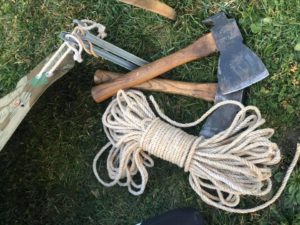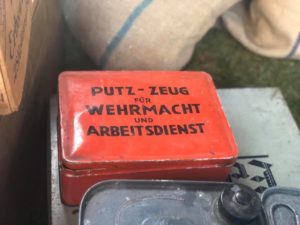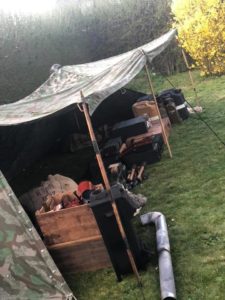Author: Markus Brunner
This post is meant to illustrate some things that I believe were common, that are functional, attainable, and scalable.
Below I have included some pictures of a reenactment display I put together, with some items I have collected for this purpose. The scenario being recreated here, is that of the Verpflegungstroß of an Infanterie-Kompanie establishing an Ausgabestelle for the platoons to rotate through before heading out to their forward positions.
This Ausgabestelle (issue point) remains established behind the lines, as a point of centralized issue for food, ammunition, lubricants, and water. It is common that reenactors will use their cars as a “supply point” to obtain more water or other needed supplies. This is a representation of what that imaginary supply point might have looked like, in reality.
In my opinion the soldier can not soldier without things to soldier with.
Step one: Water, Water is very obviously a critical supply that a unit or human being can not live without. Here at this “station” the soldiers can centralize their canteens and refill. Pictured are some common means of carrying water, the 20 liter Einheitskanister, and the 5 liter aluminum drinking water container. The exact purpose of the 5 liter aluminum container is unknown, but they show up in photographs every now and again. A typical enameled funnel of the time helps to avoid spilling such a precious commodity.
Step two: Ammunition. Wehrmacht rifle ammunition was issued in cardboard boxes, unlike most allied forces who issued it in cans. These cardboard boxes were packed into cardboard sleeves of 300 rounds each, and then into a variety of different wooden boxes that changed throughout the war. The most common variations of those are listed below.
Patronenkasten 88
Patronenkasten 88B
Luftdichter Patronenkasten
Luftdichter Patronenkasten B
Patronenkasten 900
Also pictured are some common types of grenades with the associated detonators, fuses, and metal carrying case.
Step 3: Lubricants and fuels. Pictured here are some fairly common cans meant to store oil, or fuels. The commercial product Ballistol for protecting leather and cleaning weapons, some replacement cleaning wicks and some common replacement parts. Also pictured are some examples of German lanterns of the time period.
Step 4: Food. Here are some examples of some crates of food made to Wehrmacht specification. Inside of these boxes are “Schwarzblech” (black tin) cans of meat. On top of this is a common food product “Erbswurst” or pea sausage. This popular food staple was a series of pressed tablets of pea soup that could be prepared into a hearty ham and pea soup, in a mess kit with a cup of water and only a few minutes. Behind the crates you can see larger bags used for larger bulk items such as loaves of bread or vegetables.
Step 5: First aid: Here is a civilian first aid kid which is filled with modern relabeled first aid items to handle basic trauma or boo-boos.
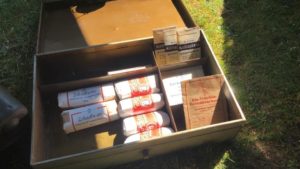
Step 6: Lastly, morale/comfort items. Pictured here is the Feldofen 42 field oven, made by Quint in Trier, with its associated coal shovel, and hooked poker. There are also a few enamelware pots and pans, and a few cooking knives, all of which were common styles in use at that time. A metal box of maintenance supplies for uniforms and equipment, and some other period type German tools and rope round out the display.
